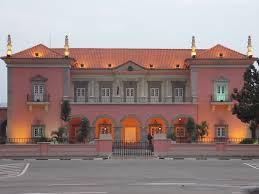



Huambo, formerly Nova Lisboa, is the third-most populous city in Angola, after the capital city Luanda and Lubango, with a population of 595,304 in the city and a population of 713,134 in the municipality of Huambo. Wikipedia
May to September (dry season): The most pleasant time to visit. Cool nights and mild, dry days — perfect for exploring on foot.
October to April (wet season): Rainy, especially from December to March, but still lush and green.
By Air: Huambo is served by Albano Machado Airport, with domestic flights from Luanda and occasional international charters.
By Road: Paved highways connect Huambo to Benguela, Lubango, and Luanda — the drive is long but scenic.
By Rail: The Benguela Railway passes through Huambo, connecting it to the coast and to cities farther inland.
Huambo Cathedral (Sé Catedral do Huambo): A beautiful colonial-era church and central city landmark.
Jardim da Cultura (Cultural Garden): A relaxing green space for walking, reading, and attending public events.
Museu Regional do Huambo: Offers insight into local history, natural heritage, and ethnographic displays.
Kuito Cuanavale Monument: A nearby war memorial and historical site important in Angola's modern history.
Mount Moco (Serra do Moco): The highest peak in Angola, ideal for nature lovers and birdwatchers — located just outside the city.
Walk through the city center to admire Portuguese-influenced architecture and quiet tree-lined avenues.
Visit local markets for fresh produce, crafts, and local snacks.
Hike or explore nearby nature reserves for birdwatching and panoramic views.
Attend cultural events at local plazas or university campuses.
Connect with locals to learn about traditional customs, dances, and cuisine.
Options include small hotels, guesthouses, and inns.
Most accommodations are mid-range and located in or near the city center.
Some newer hotels offer conference facilities and modern comforts.
Local cuisine includes funge, grilled meats, muamba de galinha, and beans with cassava.
Fresh produce is available at local markets — maize, fruits, greens, and peanuts are staples.
Restaurants serve a mix of Angolan and Portuguese dishes, along with international menus in larger hotels.
Street food vendors offer tasty, affordable snacks like meat skewers, fried plantains, and pastries.
Huambo is a cultural heartland for the Ovimbundu people, Angola’s largest ethnic group.
Portuguese is the official language, but Umbundu is widely spoken locally.
The city has strong educational and agricultural traditions, and its calm atmosphere reflects a blend of urban life and rural heritage.
Music, particularly semba and kizomba, plays an important role in community life.